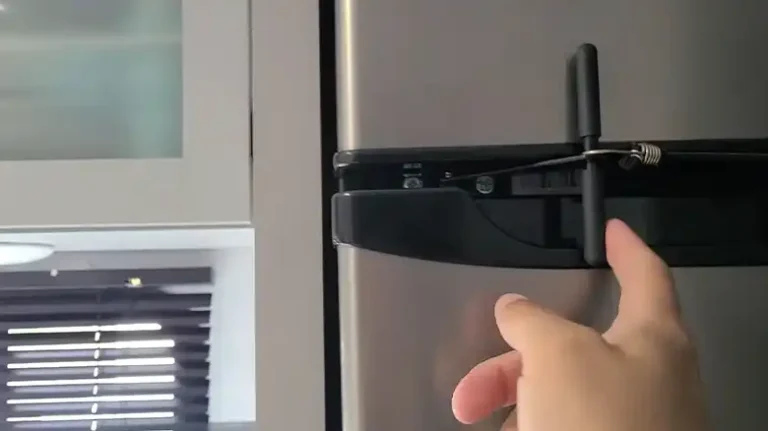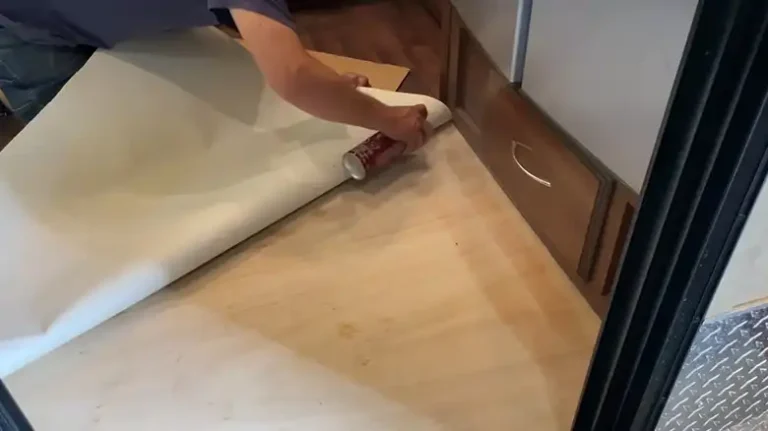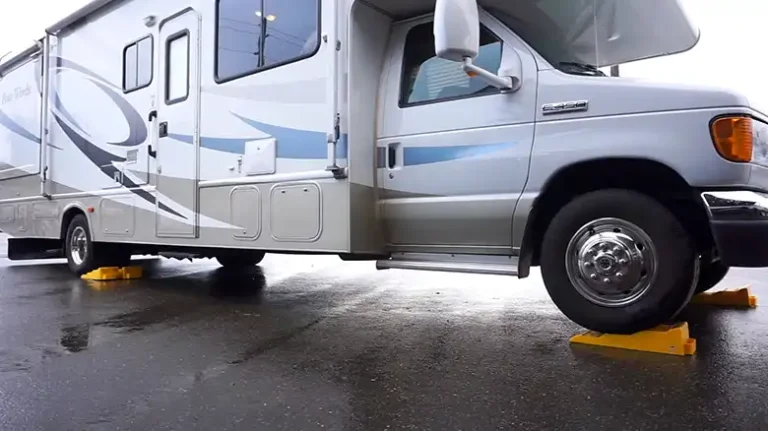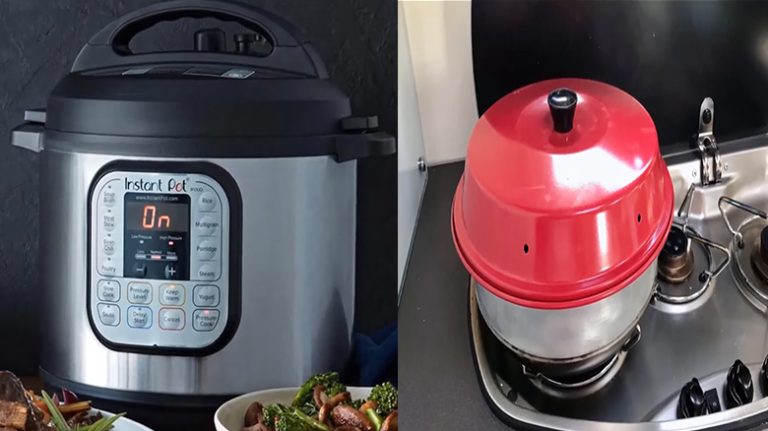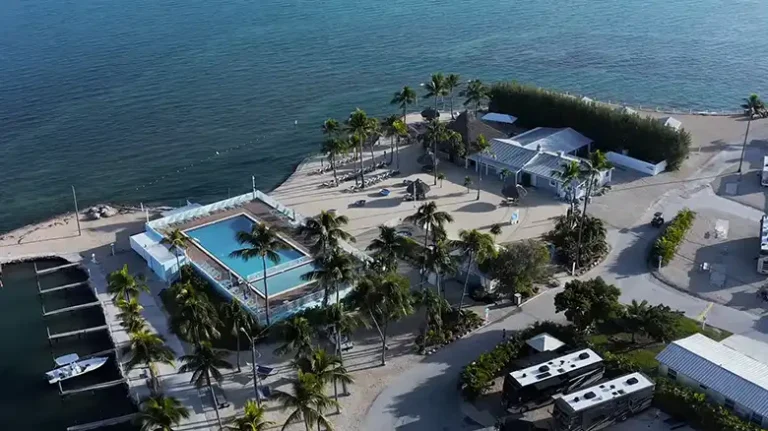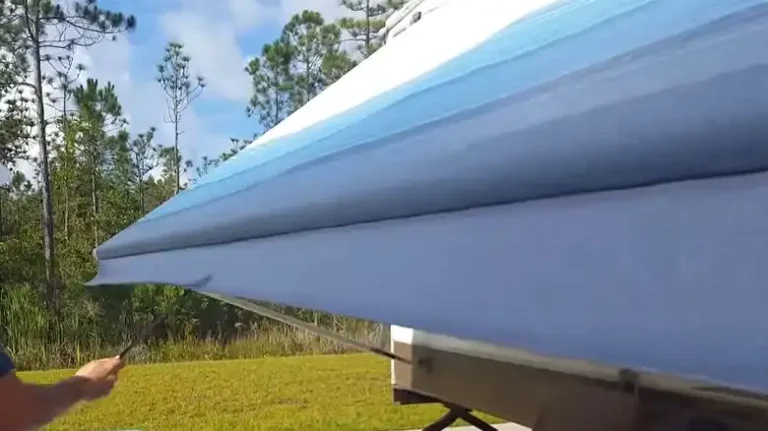First Aid for Campers
Spending time outdoors camping connects us with nature and provides an escape from the stresses of daily life. However, injuries and illnesses can happen even in remote locations. Having first aid knowledge and supplies on hand enables you to manage medical situations confidently when professional help is far away. This guide covers essential first aid information and best practices for treating issues from minor cuts and sprains to life-threatening emergencies while camping.
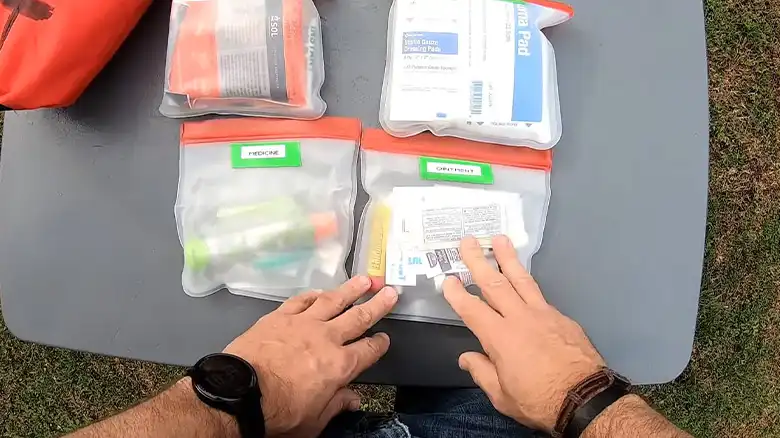
Things You Need to Pack In Your First Aid Kit for Camping
A well-stocked first aid kit tailored for camping excursions enables you to handle a wide range of issues.
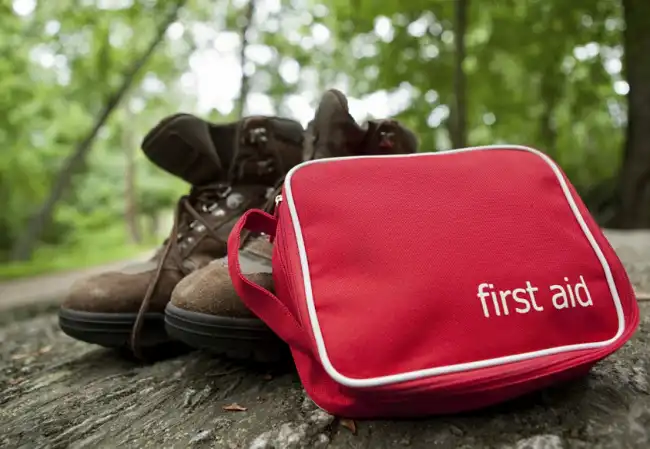
Source: eurekacamping
Ensure your kit includes –
| Purpose | Included Items |
| For covering and protecting wounds | Sterile gauze pads and rolls, adhesive bandages (different sizes), adhesive tape |
| To clean wounds and prevent infection | Alcohol wipes, hydrogen peroxide or antiseptic solution, antiseptic wipes, antiseptic ointment |
| For cutting tape, bandages, and removing splinters or ticks | Small, sharp scissors, fine-point tweezers for splinter or tick removal, scissors and tweezers |
| To reduce swelling and alleviate pain for sprains, strains, and burns | Instant cold packs or reusable gel packs |
| Reference guide for basic first aid procedures | Compact first aid manual with instructions |
| To alleviate pain from various injuries | Over-the-counter pain relievers (acetaminophen, ibuprofen) |
| For covering minor cuts, blisters, or abrasions | Assorted sizes of adhesive bandages, moleskin for blister prevention |
| To soothe and promote healing for burns | Over-the-counter burn creams or aloe vera gel, aloe vera gel |
| For treating dehydration | Oral rehydration salts or electrolyte packets |
| To prevent insect bites and soothe itching | Insect repellent with DEET, anti-itch creams containing hydrocortisone, insect repellent |
| To purify water in case of gastrointestinal issues | Water purification tablets or a portable water filter |
| To provide warmth in case of hypothermia | Compact, lightweight space blanket, emergency blanket |
| For personal medical needs | Personal medications, prescribed medications, if applicable |
| For various tasks, including cutting and preparing makeshift splints | Compact multi-tool or knife |
| For identification and emergency contact information | Identification (ID card, driver’s license), emergency contact information and any relevant medical information |
| To perform CPR | Disposable CPR face shield for rescue breathing |
| For securing bandages and removing splinters or ticks | Safety pins, fine-point tweezers |
| For flushing contaminants out of eyes | Sterile eyewash or saline solution |
| For checking body temperature | Digital thermometer |
| For signaling in emergencies | Whistle |
| For infection control | Latex-free gloves, medical gloves |
| For recording important information | Notepad and pen |
| For makeshift repairs | Duct tape |
| For precision tasks, such as removing splinters | Fine-point tweezers |
| For sun protection | Sunscreen with a high SPF |
| To protect lips from sun damage | Lip balm with sun protection |
| For hand hygiene | Hand sanitizer or biodegradable soap |
| For slings or makeshift bandages | Triangle bandage |
| For immobilization | SAM splint or elastic bandage, splints |
| To treat diarrhea | Anti-diarrhea medication |
| For alleviating upset stomach | Antacids |
| To counter allergic reactions | Antihistamines |
Adjust your first aid supplies to match specific camping hazards, durations, and group medical needs.
Common Camping Medical Issues You Should Be Aware of
While enjoying the great outdoors, be alert for these frequent medical issues –
Sprains and Strains: A sprain is an injury to a ligament, which is a tough band of tissue that connects bones together. A strain is an injury to a muscle or tendon, which is a tough band of tissue that connects muscle to bone.
Cuts and Abrasions: A cut is an open wound caused by a sharp object. An abrasion is a wound caused by the scraping or rubbing of skin against a rough surface.
Burns: A burn is an injury to the skin caused by heat, radiation, or chemicals. There are three main types of burns: first-degree, second-degree, and third-degree.
Dehydration: Dehydration is a condition that occurs when the body loses more fluids than it takes in.
Blisters: A blister is a small pocket of fluid that forms between the layers of skin. Blisters can be caused by friction, heat, or moisture.
Insect Bites and Stings: Insect bites and stings can cause pain, swelling, redness, and itching. In some cases, insect bites and stings can also cause allergic reactions, which can be serious.
Gastrointestinal Issues: Gastrointestinal issues are problems that affect the digestive system. Common gastrointestinal issues include diarrhea, constipation, vomiting, and heartburn.
Poisonous Plant Exposure: Poisonous plants can cause a variety of symptoms, depending on the type of plant and how it was ingested or exposed to.
Heat Exhaustion: Heat exhaustion is a condition that occurs when the body becomes overheated.
Hypothermia: Hypothermia is a condition that occurs when the body loses heat faster than it can produce it.
Spinal Injuries: Spinal injuries are injuries to the spinal cord, which is the bundle of nerves that runs down the back. Spinal injuries can range from minor to severe and can cause paralysis.
Heart Attack/Stroke: A heart attack is a condition that occurs when blood flow to the heart is blocked. A stroke is a condition that occurs when blood flow to the brain is blocked.
Altitude Sickness: Altitude sickness is a condition that occurs when the body does not have enough oxygen at high altitudes.
Familiarize yourself with treatment protocols for probable camping medical issues to respond correctly.
How to Treat Common/Non-severe Camping Injuries?
For managing minor medical issues like cuts, scrapes, blisters, and insect bites/stings, having basic first aid supplies enables treatment in the field –
Sprains and Strains
Cause: Result from overexertion, uneven terrain, or accidents.
Symptoms: Pain, swelling, limited range of motion.
Treatment: R.I.C.E (Rest, Ice, Compression, Elevation), over-the-counter pain relievers.
Follow R.I.C.E therapy – Rest the injured area for 48 hours. Ice the area for 20 minutes several times a day to reduce inflammation. Compress the injury with an elastic bandage to immobilize and support. Elevate the sprained joint above heart level to minimize swelling. Take over-the-counter NSAID medication like ibuprofen to relieve pain per dosage instructions. Seek medical attention if symptoms worsen or don’t improve within 72 hours.
Cuts and Abrasions
Cause: Contact with sharp objects, falls, or accidents.
Symptoms: Bleeding, pain, risk of infection.
Treatment: Clean with water, apply antiseptic, and use sterile dressings or bandages.
Irrigate the wound with clean running water or saline solution to remove all debris. Pat dry with sterile gauze then apply antibiotic ointment over the injury, ensuring edges seal together well to avoid gaps. Cover with sterile bandage or dressing, securing snugly with medical tape. Change dressings daily, watching for increased redness, swelling or pus indicating infection and needing oral antibiotics. Seek stitches for wounds gaping open greater than 1/4 inch.
Burns
Cause: Campfire accidents, cooking mishaps, or contact with hot surfaces.
Symptoms: Pain, redness, blistering.
Treatment: Cool with water, cover with a clean cloth, and use over-the-counter burn creams.
Flush skin with cool water for 10-15 minutes until burning sensation starts to subside. Gently pat dry taking care not to disturb blisters which serve as natural bandages. Apply antibiotic cream or burn relief gel like aloe vera then cover loosely with sterile gauze or clean cloth to protect wound beds as they heal. Give ibuprofen to alleviate swelling and discomfort per label dosing. Watch for signs of infection including increased redness/oozing, fever, chills or skin red streaks needing immediate medical intervention.
Dehydration
Cause: Inadequate fluid intake, hot weather, or strenuous activity.
Symptoms: Thirst, dry mouth, dark urine, dizziness.
Prevention: Adequate fluid intake.
Have the person rest comfortably in shade or shelter. Provide small sips of oral rehydration solutions like Pedialyte frequently until urination normalizes. Monitor vital signs closely for unstable readings necessitating IV fluids. For severe dehydration with persistent vomiting/diarrhea seek emergency transport.
Blisters
Cause: Friction irritation on hands/feet.
Symptoms: Fluid-filled sac on the skin’s surface. Pain or tenderness around the blister.
Treatment: Lance the blister skin with a sterile needle if necessary. Apply antibiotic ointment. Cover with a bandage.
Clean skin with antiseptic soap and water first before opening blisters, then sterilize a sewing needle by heating over a flame briefly. Pierce the edge of the blister horizontally to slowly drain fluid into sterile gauze then apply antibiotic ointment all over and around the wound. Cover the blister with a non-stick sterile pad or soft cloth kept in place using paper medical tape applied only to healthy skin areas. Change dressing daily watching for increased redness signaling infection.
Insect Bites and Stings
Cause: Exposure to mosquitoes, ticks, bees, or other insects.
Symptoms: Itching, redness, swelling, pain.
Treatment: Use insect repellent, wear protective clothing, apply anti-itch creams or antihistamines.
Remove the stinger gently by scraping out horizontally with a credit card-type edge if still visible to avoid squeezing more venom. Wash the area carefully with antiseptic soap and apply hydrocortisone cream containing pramoxine directly to the bite or sting to relieve itching and swelling. For severe reactions involving trouble breathing or swallowing, give diphenhydramine antihistamine like Benadryl immediately and seek emergency care watching closely for anaphylaxis until help arrives. Apply ice wrapped in cloth to reduce additional swelling and discomfort.
Gastrointestinal Issues
Cause: Contaminated food or water.
Symptoms: Diarrhea, stomach cramps, nausea.
Prevention: Practice good hygiene, purify water, and cook food thoroughly.
Have a person rest while providing ample fluids to prevent dehydration. Give electrolyte solutions like Pedialyte mixed with clean water to replenish salts lost from diarrhea episodes. Manage discomfort with over-the-counter anti-nausea or anti-diarrheal medication if able to swallow safely. Monitor closely for persistent vomiting, bloody stools, or fever indicating serious illness needing immediate evacuation.
Poisonous Plant Exposure
Cause: Contact with plants like poison ivy, oak, or sumac.
Symptoms: Itching, redness, blisters.
Treatment: Wash affected areas, use over-the-counter creams, and avoid scratching.
Wash exposed skin with cold soapy water repeatedly to remove residual plant oils, being careful not to spread the irritation. Apply hydrocortisone cream containing aloe vera to affected areas to ease itching and inflammation. Take an oral antihistamine like diphenhydramine or famotidine if severe allergic reactions develop. Cover with clean loose bandages to prevent infection plus discourage scratching which spreads rashes. Seek emergency care promptly for severe reactions featuring swollen airways, trouble breathing, or anaphylaxis.
How to Handle Severe Camping Injuries?
More dangerous situations like spinal injuries from falls or uncontrolled bleeding necessitate contacting emergency services rapidly. Careful handling by campers first on the scene can help stabilize the victim –
Heat Exhaustion
Cause: Prolonged exposure to high temperatures, and inadequate fluid intake.
Symptoms: Heavy sweating, weakness, nausea, rapid pulse.
Treatment: Move to a cooler place, rest, rehydrate with water or sports drinks.
Help the person rest comfortably in a cooler shaded place then remove any restrictive or excess clothing. Use water, wet towels, ice packs, or battery-powered handheld fans to actively cool the body down to normal temp. Provide chilled electrolyte drinks like Gatorade frequently in small volume quantities if the patient is alert with no nausea. Monitor breathing, heart rate, and temperature closely as exhaustion may progress to deadly heatstroke without swift intervention. Seek emergency assistance promptly if symptoms don’t improve rapidly with field treatment.
Hypothermia
Cause: Exposure to cold and wet conditions, and inadequate clothing.
Symptoms: Shivering, confusion, fatigue, numbness.
Treatment: Move to a warm environment, remove wet clothing, and use layers to keep warm.
Carefully move the person to a warm, dry shelter then remove any cold wet garments gently and replace them with layers of warm blankets or sleeping bags to raise body temperature gradually. If alert give warm non-alcoholic drinks slowly like heated juice but do not massage cold limbs which can trigger dangerous irregular heart rhythms. Seek emergency transport immediately if temperature doesn’t rebound quickly or the patient becomes unresponsive, vital signs drop significantly and/or cardiac arrest is imminent.
Spinal Injuries
Cause: Severe back/neck pain after a fall.
Symptoms: Severe pain in the back or neck, loss of sensation or paralysis, and difficulty breathing or coughing.
Treatment: Stabilize the head and neck by not moving the person. Wait for emergency responders to assess and provide proper care.
Utmost care must be taken to avoid exacerbating spinal cord trauma through the movement of the victim since this risks permanent paralysis. If no breathing or pulse, follow CPR protocols minimizing head/neck movement and strictly aligning it with the torso if rescue breaths are needed. For responsive victims, gently place padding under the head then secure with sandbags/rolled clothing encircling each side keeping the neck/back immobilized. Do not remove the helmet unless obstructs critical airway access. Monitor vitals continuously until emergency responders arrive to properly stabilize the victim on a backboard for safe transport protecting delicate spinal alignment meticulously throughout.
Heart Attack/Stroke
Cause: Reduced blood flow to the heart or brain.
Symptoms: Chest pain or discomfort, numbness or weakness in the face, arm, or leg, blurred vision, and trouble breathing or speaking.
Treatment: Call emergency help immediately and have the person rest in a comfortable position. If a heart attack is suspected, give aspirin if available. Monitor vital signs and provide reassurance.
Time is critical so dial 911 immediately and determine if the person has aspirin or nitroglycerin tablets in their possession which may help until paramedics arrive if a heart attack is apparent. Have them rest comfortably propped up to ease breathing and continually provide reassurance. Note the time any chest pain began and the symptoms present. If stroke is indicated by neurological deficits, keep the victim still to avoid falls from imbalance or weakness. Give nothing by mouth. Meticulously monitor breathing rate, pulse, skin color changes plus neurological functioning and update dispatchers continually until an ambulance arrives.
Altitude Sickness
Cause: Rapid ascent to high altitudes.
Symptoms: Headache, nausea, dizziness, shortness of breath.
Treatment: Descend to lower altitudes, rest, stay hydrated.
Mild cases may be treated by avoiding further ascent to allow gradual acclimatization, along with rest and staying properly hydrated. Descend to lower altitudes if symptoms worsen or do not improve within 24 hours. Severe cases featuring pulmonary or cerebral edema require immediate descent plus administering supplemental oxygen. Emergency hospitalization is needed for unresponsive victims where aggressive diuresis, steroids, or hyperbaric treatment may be life-saving until air ambulance transport can be arranged.
NOTE: For severe bleeding not controlled with direct pressure –
If blood soaks through multiple gauze pads/bandages, fashion a tourniquet above the wound using a belt or bandanna wrapped tightly around the extremity. Twist a rigid object like a flashlight inserted above the wrap to tighten further reducing arterial circulation. Note the time of tourniquet application and communicate this to emergency responders who will determine if limb amputation is required. Monitor pulse below the tourniquet site. Loosen briefly every 10-15 minutes if bleeding permits to avoid tissue damage. Applying hemostatic gauze also aids in coagulation when available.
How to Contact Emergency Services From Remote Camping Locations?
Summoning emergency assistance from deep wilderness requires forethought and alternate contingencies when cell phones lack reception. Establishing an evacuation protocol beforehand saves precious time during crisis scenarios –
Designate a team member to seek out help immediately by hiking uphill rapidly if the injured party is in a valley, or by scrambling to the nearest ridge with clearer radio/phone connectivity. Shouting loudly, blowing a whistle, or flashing a signal mirror may alert other campers nearby with working communication devices to call for paramedic assistance. Locate the nearest ranger station, campground, or trailhead to relay incident details so emergency responders mobilize appropriately.
Mark the GPS coordinates precisely on a topo map and communicate this to authorities clearly referencing major geographic landmarks. Pack signaling devices like brightly-colored survey marking tape, flares, signal mirrors, or dye packs to help airlift helicopters pinpoint your location when dispatching wilderness first responders. Having several backup plans for making contact from remote terrain saves vital time summoning lifesaving support.
How to Transport an Injured Person From Remote Camping Locations
Evacuating severely injured or immobile victims through undeveloped backcountry to rendezvous with emergency transport vehicles requires ingenuity under duress. Assessing tools on hand and terrain constraints quickly results in an actionable plan –
Improvise a stretcher using available poles, ski equipment, shelter halves, or tree branches laced tightly with rope or torn clothing underneath a sleeping pad or rain fly to create a rigid carrying platform. Use 8 able persons to lift the corners steadying the makeshift litter if able. Take care to avoid bumps during carry-out and keep the victim warm/stable. Use ropes/pulleys to extract around obstacles if required.
Slow progress beats additional injury from falls. Arrange relay teams if evacuation involves significant distance or elevation changes. Bring the victim only as far as required to reach a lake, logging road, or trailhead allowing ambulance transfer onto a proper backboard and gurney.
How to Prevent Injuries While Camping?
While unforeseeable accidents occur occasionally, being proactive against environmental hazards through careful preparation, protective equipment, and preventative health measures reduces the probability of medical emergencies and the need for heroic rescues –
a) Pack reliable flashlights/headlamps allowing terrain navigation overnight
b) Wear high-traction hiking boots with ankle support for carrying loads
c) Check weather forecasts thoroughly before excursions to dress/pack properly
d) Apply insect repellents liberally in tick/mosquito prone forest
e) Sanitize backcountry water to avoid debilitating gastrointestinal illness
f) Scope campsite for dead branches or trail hazards requiring removal
g) Share detailed itineraries plus check-in times with friends/family before embarking
Final Thought
Having key first aid knowledge and supplies on hand allows you to effectively manage illness and injury situations during camping trips when professional medical help is delayed or unavailable. Prepare by packing a tailored camping first aid kit, studying common outdoor medical issues and their treatments, establishing emergency contacts/evacuation plans beforehand, and taking proactive measures to avoid mishaps far from hospitals or clinics. Although staying vigilant against hazards, the best camping adventures proceed safely so scarce beautiful locations can be treasured using sound preparedness.
Common Related Questions
What is CPR first aid?
CPR also known as Cardiopulmonary Resuscitation restores oxygenated blood flow to revive victims of cardiac arrest. Combining chest compressions and rescue breaths buys time until advanced lifesaving treatment is available.
What is the ABC method in first aid?
Airway, Breathing, Circulation – the ABC method is a triage protocol for first responders to stabilize critical patients until emergency services arrive to provide advanced life support.
What Cannot be in a first aid kit?
Prescription medications, ointments with antibiotics or steroids, witch hazel, and eyedrops cannot be included in standard first aid kits. Follow all state regulations and guidance from health agencies on proper components.

